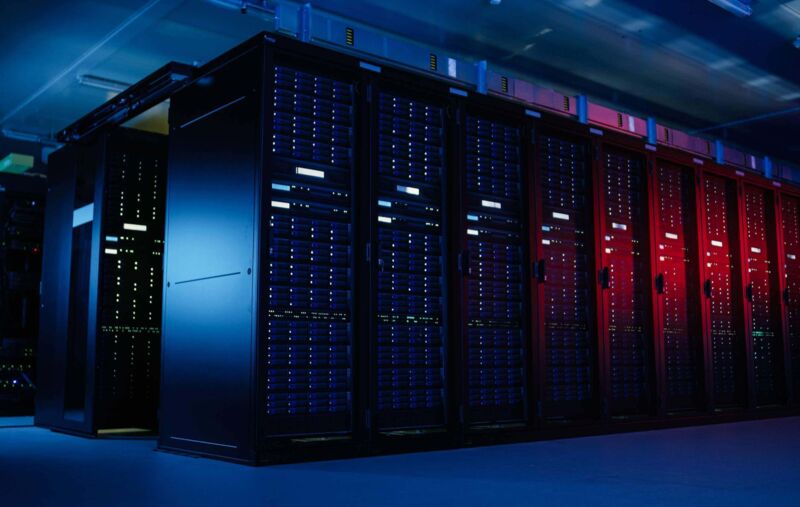SER Blog Innovation & Technology
Mainframe modernization
Why banks and insurance providers should press ahead with IT modernization
Banks and insurance providers are calling for a holistic digitalization strategy and the use of cutting-edge technologies like artificial intelligence. Automation is also one of the key goals for 2024, our survey found. But first we need to resolve the eternal debate surrounding the mainframe: Keep or modernize?

What is mainframe modernization?
Mainframe modernization is the process of updating and transforming legacy mainframe systems. This includes migrating applications, data and infrastructure to modern platforms and architectures.
What isn’t mainframe modernization?
Myth: Mainframe modernization is the same as migrating all applications to the cloud. Truth: This doesn’t have to be the case. Transformation can mean both integration with the mainframe as well as modernization on the mainframe.
The mainframe stays
According to IBM, 45 of the top 50 banks, 4 of the top 5 airlines and fully 67 of the Fortune 100 companies use the mainframe as their core platform. But these are not the same outdated, decades-old systems. They have undergone continual modernization and migration of the right applications to new platforms.
The hybrid approach: Integration with the mainframe
A major concern for companies considering mainframe modernization is the prospect of wasted investments. Many have spent decades investing in and deeply embedding the mainframe within their business. The question banking and insurance executives are asking is therefore: How can we keep using our legacy technology and business logic but modernize in parallel? The answer begins with a sound cost optimization plan. Only the most suitable and cost-efficient applications will be migrated to the cloud environment, while others stay running on the mainframe.
Ergo, modernization does not have to spell the demise of the mainframe. The transformation instead serves as a catalyst for optimizing legacy applications and building on existing systems. And the added value generated by past investments is not lost.
How SEW-EURODRIVE achieved an ROI of 336%
Forrester Consulting studied the total economic impact of Doxis Intelligent Content Automation at our customer SEW-EURODRIVE.
Discover the significant findings of this independent study.
Download the study
The hybrid solution: Requirements
The hybrid approach promises to retain the company’s mainframe and legacy business logic, and to combine these with modernization and the latest technologies. But conditions apply.
Invest in people
Keeping some applications on the mainframe also means a need for ongoing maintenance. But we do this already, you’re probably thinking. Nevertheless, the risk today is the same: not enough people. Only a handful of developers are still skilled in legacy mainframe languages and technologies. And among the younger generation even fewer still are following in their footsteps. The knowledge is slowly dying out — another death knell for the attractiveness of the mainframe for banks and insurance providers. If, then, a company decides in favor of the mainframe or the hybrid approach, it must also be aware of the associated investments in young talent that will be required to safeguard the mainframe’s upkeep for years to come.
Make data available to the cloud
Making existing data available is an essential precondition for integrating new technologies with the mainframe. Tools like Amazon API Gateway or Azure Logic Apps connectors can be used to transfer the data to the cloud as the basis for incorporating leading-edge technologies like machine learning or even low-code/no-code platforms. This unlocks new business cases, for instance fraud detection using a combination of modern analytics and AI.
Mainframe modernization: Where do I start?
Step one is the cost optimization plan. Critically analyze every single application on your mainframe. Digital archiving and document management are typically the areas where you will find enormous potential for savings and optimization.
Cloud-based document management
Modern archive systems not only offer significantly greater flexibility but are also more resilient and more cost-effective to maintain and optimize compared to their mainframe counterparts. Additionally, they empower you to respond faster to external influences, like new legal requirements.
Greater resiliency with hybrid work models
The pandemic has also shown us how important hybrid work models are for a company's resiliency. A cloud-based enterprise content management system with mainframe integration empowers employees to work on credit applications or damage claims from the office or from home, and to launch the corresponding workflows.
Our question to you: Keep all your mainframe applications as-is or modernize? Whatever you decide, a modern enterprise content management system will help you archive and manage your information.
The latest digitization trends, laws and guidelines, and helpful tips straight to your inbox: Subscribe to our newsletter.
How can we help you?
+49 (0) 30 498582-0Your message has reached us!
We appreciate your interest and will get back to you shortly.




